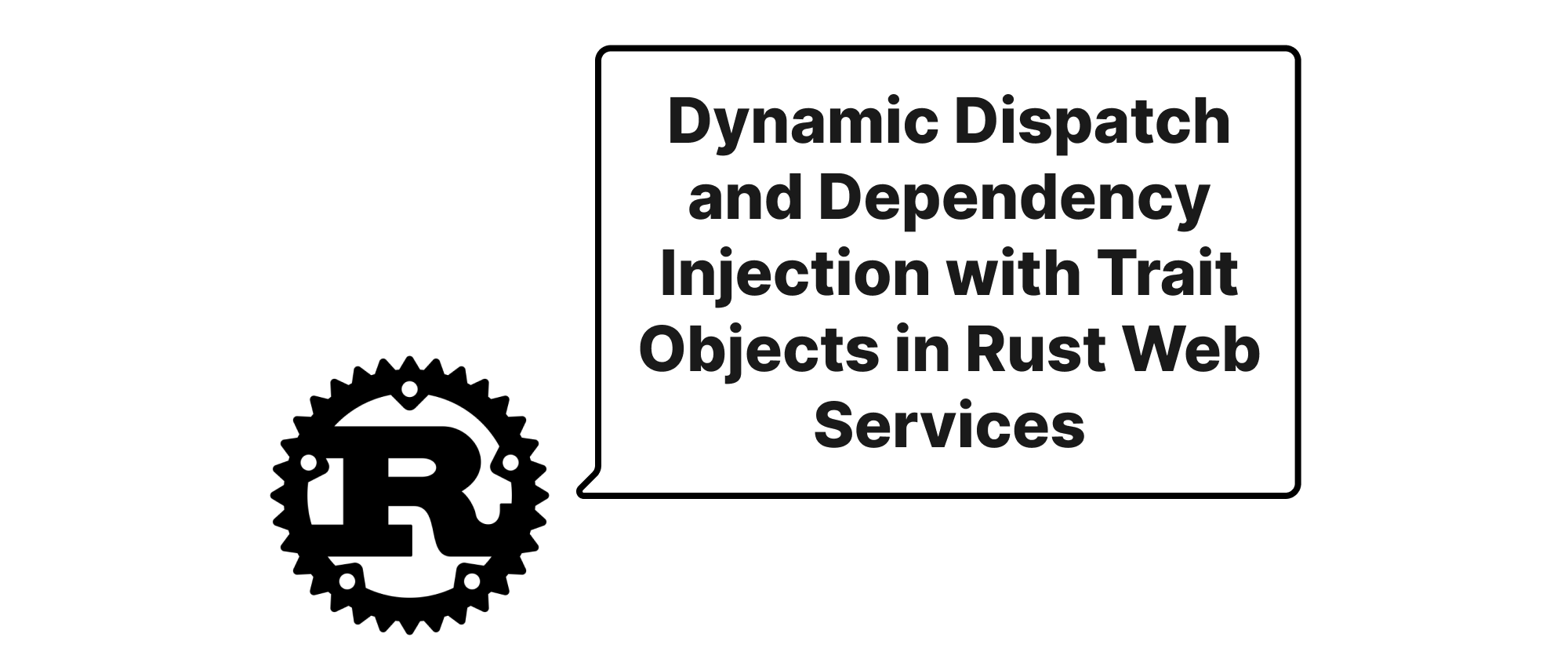Choosing Your Test Double The Right Way in Go
Min-jun Kim
Dev Intern · Leapcell

Testing is an indispensable part of software development, ensuring the reliability and correctness of our applications. In Go, when dealing with services that communicate over HTTP, a common dilemma arises: how best to test interactions with external HTTP dependencies. Should we spin up a real, albeit ephemeral, HTTP server for integration tests, or should we meticulously craft mock objects to simulate these interactions during unit tests? This question is not merely academic; it has significant implications for test maintainability, execution speed, and coverage. This article delves into the trade-offs between httptest.NewServer for integration testing and mock service interfaces for unit testing, guiding you toward an effective testing strategy in Go.
Before we dive into the specifics, let's clarify some core concepts that are central to our discussion:
- Unit Testing: Focuses on testing individual units or components of a software in isolation. The goal is to verify that each unit of code works as expected. External dependencies are typically "mocked" or "stubbed" to keep the unit isolated.
- Integration Testing: Aims to test how different units or components of a software system interact with each other. This often involves testing the system's interaction with external services, databases, or APIs.
httptest.NewServer: A Go package that provides utilities for HTTP testing.httptest.NewServercreates a new HTTP server that listens on a random local network address, making it ideal for integration tests where you need a live HTTP endpoint but want to control its responses and behavior.- Mock Service Interface: In the context of unit testing, this refers to creating a substitute object that mimics the behavior of a real dependency. Instead of calling the actual external service, your code interacts with this mock, which provides predefined responses, allowing you to test your logic in isolation without actual network calls.
Now, let's explore the two primary approaches.
httptest.NewServer for Integration Tests
httptest.NewServer is a powerful tool for integration testing. It allows you to create a fully functional HTTP server within your test suite, which your code under test can then send requests to. This simulates a real external service, letting you test the complete request-response cycle, including HTTP headers, status codes, and body content.
How it works:
You pass an http.Handler to httptest.NewServer, which then handles incoming requests. The server starts on a random available port, and its URL is accessible via ts.URL.
Example:
Consider a client that fetches user data from an external API:
package main import ( "encoding/json" "fmt" "io" "net/http" ) type User struct { ID string `json:"id"` Name string `json:"name"` Email string `json:"email"` } type UserClient struct { baseURL string client *http.Client } func NewUserClient(baseURL string) *UserClient { return &UserClient{ baseURL: baseURL, client: &http.Client{}, } } func (uc *UserClient) GetUser(id string) (*User, error) { resp, err := uc.client.Get(fmt.Sprintf("%s/users/%s", uc.baseURL, id)) if err != nil { return nil, fmt.Errorf("failed to make request: %w", err) } defer resp.Body.Close() if resp.StatusCode != http.StatusOK { return nil, fmt.Errorf("unexpected status code: %d", resp.StatusCode) } body, err := io.ReadAll(resp.Body) if err != nil { return nil, fmt.Errorf("failed to read response body: %w", err) } var user User if err := json.Unmarshal(body, &user); err != nil { return nil, fmt.Errorf("failed to unmarshal user data: %w", err) } return &user, nil }
Now, let's write an integration test using httptest.NewServer:
package main import ( "encoding/json" "net/http" "net/http/httptest" "testing" ) func TestUserClient_GetUser_Integration(t *testing.T) { // Create a mock server ts := httptest.NewServer(http.HandlerFunc(func(w http.ResponseWriter, r *http.Request) { if r.URL.Path == "/users/123" { w.WriteHeader(http.StatusOK) json.NewEncoder(w).Encode(User{ID: "123", Name: "John Doe", Email: "john@example.com"}) } else if r.URL.Path == "/users/404" { w.WriteHeader(http.StatusNotFound) } else { w.WriteHeader(http.StatusInternalServerError) } })) defer ts.Close() // Close the server when the test finishes client := NewUserClient(ts.URL) // Test case 1: Successful user retrieval user, err := client.GetUser("123") if err != nil { t.Fatalf("Expected no error, got %v", err) } if user.ID != "123" || user.Name != "John Doe" { t.Errorf("Expected user John Doe with ID 123, got %v", user) } // Test case 2: User not found _, err = client.GetUser("404") if err == nil { t.Fatalf("Expected an error for user not found, got nil") } expectedErrMsg := "unexpected status code: 404" if err.Error() != expectedErrMsg { t.Errorf("Expected error '%s', got '%s'", expectedErrMsg, err.Error()) } }
Pros:
- High Fidelity: Tests a realistic interaction with an HTTP service, including network serialization/deserialization, HTTP status codes, and headers.
- Comprehensive Error Handling: Allows testing various HTTP error scenarios (4xx, 5xx) accurately.
- Less Mocking Boilerplate: You define behavior for the
http.Handlerwhich is often simpler than defining an entire mock interface with multiple methods.
Cons:
- Slower Execution: Spinning up and tearing down a real HTTP server takes more time than purely in-memory unit tests.
- Network Dependency (Local): Although it's a local server, it still involves network stack interaction, which can be a source of subtle issues or slowness.
- Debugging Complexity: Debugging issues within the
http.Handlercan sometimes be trickier than debugging a mock object directly.
Mock Service Interfaces for Unit Tests
For unit testing, isolating our code from external dependencies is paramount. This is where mock service interfaces shine. Instead of hitting a real HTTP endpoint, we define an interface for our external service and then create a mock implementation of that interface. Our code under test then interacts with this mock.
How it works:
First, define an interface that your client UserClient must satisfy (or, more commonly, define an interface for the dependency that UserClient uses if UserClient were receiving an interface as a dependency). Then, create a mock struct that implements this interface, allowing you to control the return values and side effects of its methods.
Example:
Let's refactor our UserClient to depend on an interface for making HTTP requests:
package main import ( "bytes" "encoding/json" "fmt" "io" "net/http" ) // HTTPClient defines the interface for making HTTP requests. // We only need the Get method for our current UserClient. type HTTPClient interface { Get(url string) (*http.Response, error) } // ConcreteHttpClient is a wrapper around the standard http.Client type ConcreteHttpClient struct { client *http.Client } func NewConcreteHttpClient() *ConcreteHttpClient { return &ConcreteHttpClient{client: &http.Client{}} } func (c *ConcreteHttpClient) Get(url string) (*http.Response, error) { return c.client.Get(url) } type UserClientWithInterface struct { baseURL string httpClient HTTPClient // Dependency injected HTTPClient } func NewUserClientWithInterface(baseURL string, client HTTPClient) *UserClientWithInterface { return &UserClientWithInterface{ baseURL: baseURL, httpClient: client, } } func (uc *UserClientWithInterface) GetUser(id string) (*User, error) { resp, err := uc.httpClient.Get(fmt.Sprintf("%s/users/%s", uc.baseURL, id)) if err != nil { return nil, fmt.Errorf("failed to make request: %w", err) } defer resp.Body.Close() if resp.StatusCode != http.StatusOK { return nil, fmt.Errorf("unexpected status code: %d", resp.StatusCode) } body, err := io.ReadAll(resp.Body) if err != nil { return nil, fmt.Errorf("failed to read response body: %w", err) } var user User if err := json.Unmarshal(body, &user); err != nil { return nil, fmt.Errorf("failed to unmarshal user data: %w", err) } return &user, nil }
Now, let's create a mock HTTPClient for unit testing:
package main import ( "bytes" "io" "net/http" "testing" ) // MockHTTPClient is a mock implementation of the HTTPClient interface type MockHTTPClient struct { GetResponse *http.Response GetError error } func (m *MockHTTPClient) Get(url string) (*http.Response, error) { return m.GetResponse, m.GetError } func TestUserClientWithInterface_GetUser_Unit(t *testing.T) { // Test case 1: Successful user retrieval mockClientSuccess := &MockHTTPClient{ GetResponse: &http.Response{ StatusCode: http.StatusOK, Body: io.NopCloser(bytes.NewBufferString(`{"id":"123","name":"John Doe","email":"john@example.com"}`)), }, GetError: nil, } clientSuccess := NewUserClientWithInterface("http://api.example.com", mockClientSuccess) user, err := clientSuccess.GetUser("123") if err != nil { t.Fatalf("Expected no error, got %v", err) } if user.ID != "123" || user.Name != "John Doe" { t.Errorf("Expected user John Doe with ID 123, got %v", user) } // Test case 2: User not found (status 404) mockClientNotFound := &MockHTTPClient{ GetResponse: &http.Response{ StatusCode: http.StatusNotFound, Body: io.NopCloser(bytes.NewBufferString("")), // Empty body for 404 }, GetError: nil, } clientNotFound := NewUserClientWithInterface("http://api.example.com", mockClientNotFound) _, err = clientNotFound.GetUser("404") if err == nil { t.Fatalf("Expected an error for user not found, got nil") } expectedErrMsgNotFound := "unexpected status code: 404" if err.Error() != expectedErrMsgNotFound { t.Errorf("Expected error '%s', got '%s'", expectedErrMsgNotFound, err.Error()) } // Test case 3: Network error mockClientNetworkError := &MockHTTPClient{ GetResponse: nil, GetError: fmt.Errorf("network connection refused"), } clientNetworkError := NewUserClientWithInterface("http://api.example.com", mockClientNetworkError) _, err = clientNetworkError.GetUser("123") if err == nil { t.Fatalf("Expected a network error, got nil") } expectedErrMsgNetwork := "failed to make request: network connection refused" if err.Error() != expectedErrMsgNetwork { t.Errorf("Expected error '%s', got '%s'", expectedErrMsgNetwork, err.Error()) } }
Pros:
- Fast Execution: Tests run entirely in memory, making them extremely fast and suitable for continuous integration.
- Isolation: The code under test is completely isolated from external factors, ensuring that test failures indicate issues within the unit itself.
- Precise Control: You have granular control over the responses and errors returned by the mock, making it easy to test edge cases.
Cons:
- Lower Fidelity: Does not test the actual HTTP transport layer, potential issues with serialization/deserialization or header handling might be missed.
- Boilerplate: Requires defining interfaces and creating mock implementations, which can lead to more boilerplate code, especially if an external mocking library isn't used.
- Risk of Inaccurate Mocks: If your mock doesn't precisely mimic the real service's behavior, your tests might pass while the actual integration fails.
Making the Right Choice
The choice between httptest.NewServer and mock service interfaces largely depends on the type of test you're writing and the specific aspect you want to verify.
- Use mock service interfaces for unit tests when you want to test the internal logic of your component in isolation, ensuring it handles various responses (success, different error codes) and network failures correctly. This is about how your code reacts to various
HTTPClientoutcomes. These tests should be fast and focused. - Use
httptest.NewServerfor integration tests when you need to ensure that your component correctly interfaces with an HTTP service, including the nuances of the HTTP protocol. This is about verifying the end-to-end communication and data exchange over HTTP. These tests are slower but provide higher confidence in real-world scenarios.
A robust testing strategy often involves both approaches. Start with comprehensive unit tests using mock interfaces for your core business logic and client-side HTTP interaction logic. Supplement these with integration tests using httptest.NewServer to verify the actual HTTP communication path and ensure your client correctly interprets responses from a live (albeit local) server.
In conclusion, httptest.NewServer offers high-fidelity integration testing for HTTP interactions, providing confidence in real-world scenarios at the cost of speed. Mock service interfaces, on the other hand, enable lightning-fast, isolated unit testing, perfect for verifying internal logic and error handling. The optimal strategy harmonizes these two powerful techniques, ensuring both the modular correctness of your components and their seamless integration into the larger system.


